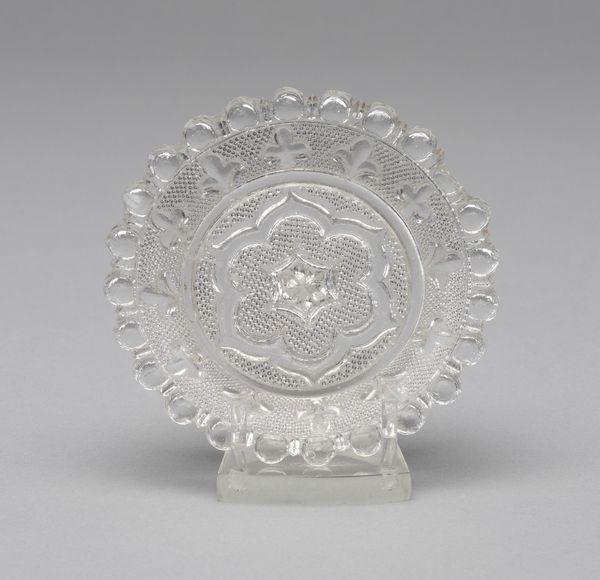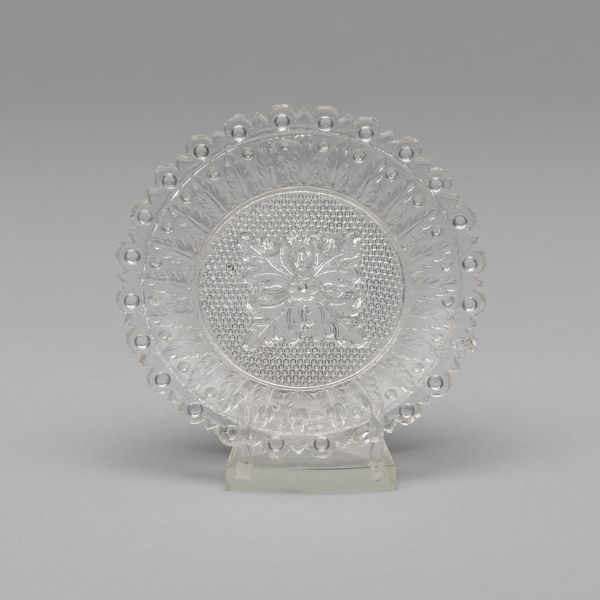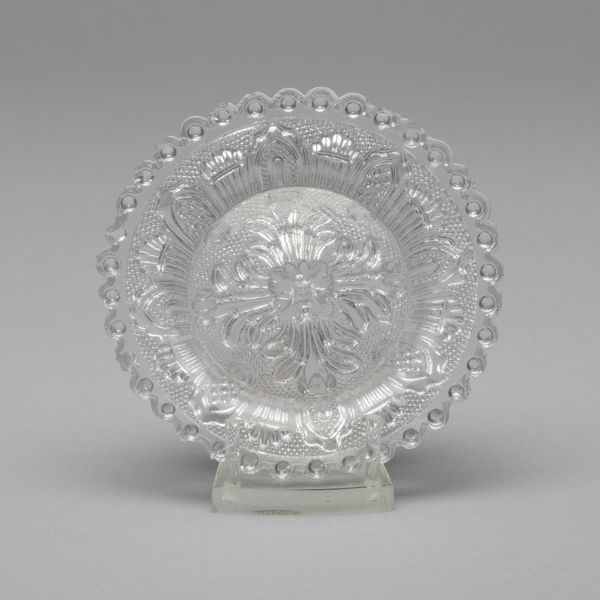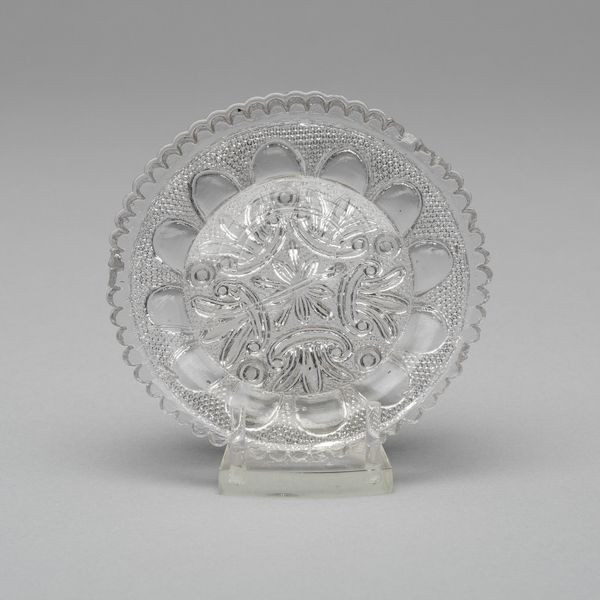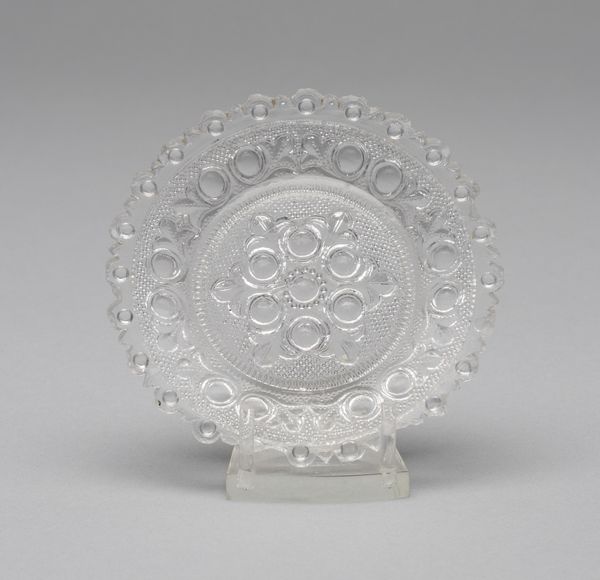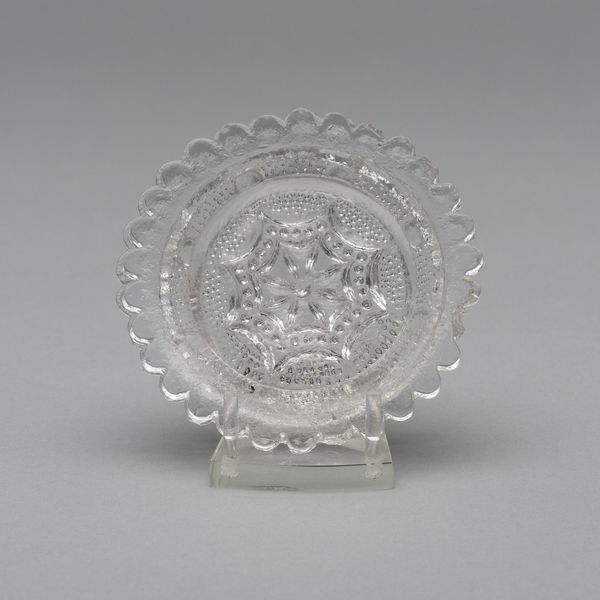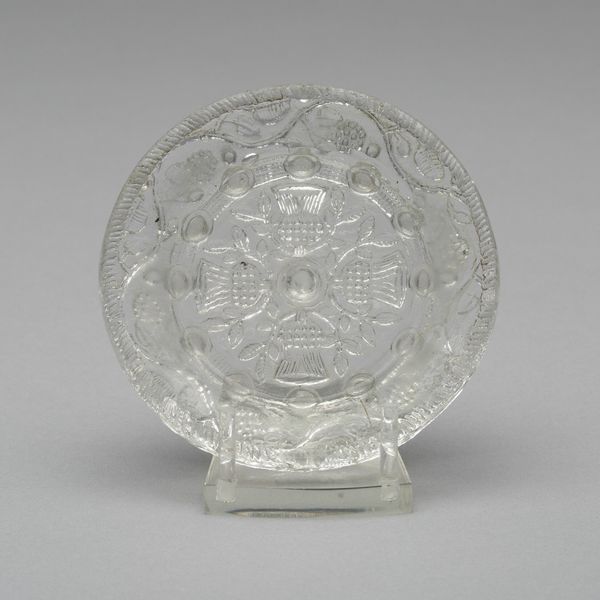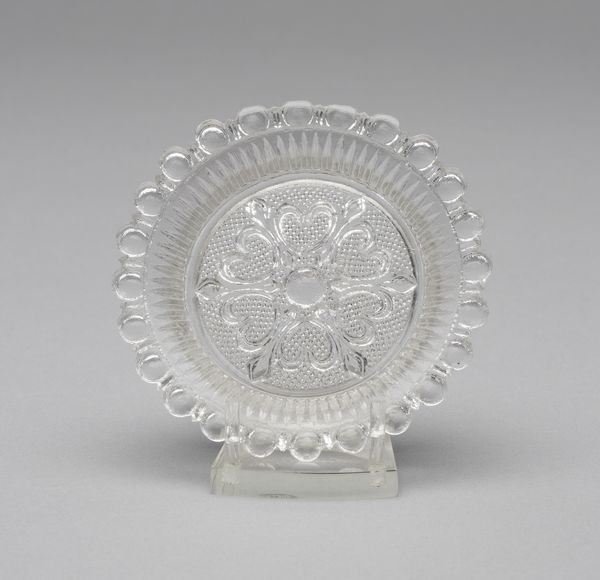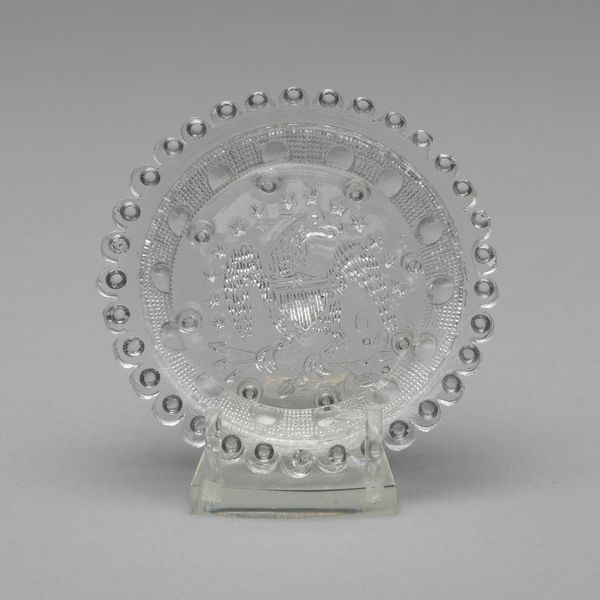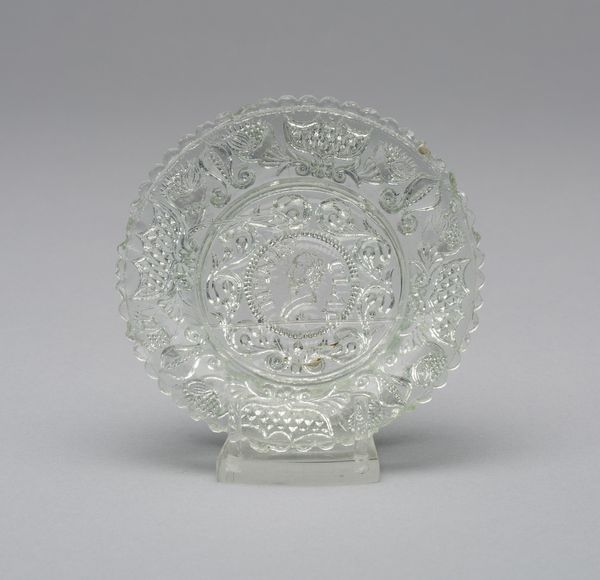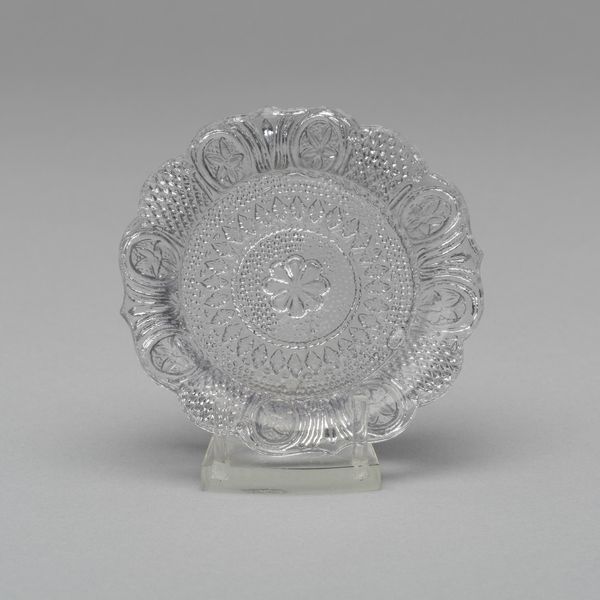
glass
#
glass
#
decorative-art
Dimensions: diam. 8.7 cm (3 7/16 in.)
Copyright: Public Domain
Curator: I’m struck by how light seems to dance across the surface. The clarity is quite impressive. Editor: Absolutely. Here at the Art Institute of Chicago, we have what's known as a “Cup Plate,” dating back to 1830-1835. These small, decorative plates were functional objects, meant for setting cups down, avoiding spills in the parlor or dining room. It’s anonymous work, of course, though mass production meant artisans worked to quickly produce wares to satisfy growing demand from emerging middles classes Curator: I find the composition mesmerizing—concentric circles punctuated by those oval shapes. Notice how the ridges on the outer edge capture the light, creating this shimmering effect? The use of symmetry draws you to the center. Editor: Indeed. The materiality of this object—glass— speaks volumes about the rise of industrial manufacturing, particularly of domestic objects like plates and drinking glasses, throughout the early 19th Century. The transparency almost elevates the functional to an ethereal, decorative art form. Curator: The engraved patterns... intricate! And look how light and shadow play within them, defining each section with clarity. It’s about formal visual dynamics, don’t you think? Editor: The pattern's replication reminds of printmaking’s proliferation of imagery and goods, mirroring a growing capitalist society's emphasis on material acquisition.. Its function became its downfall; machine-made innovations rapidly made them cheaper, obsolete even Curator: Even in its obsolescence, it achieves elegance. The very fact of being a “cup plate” seems an almost self-effacing statement for something so visually delightful. The craftsman definitely seemed conscious about symmetry as beauty! Editor: Precisely. These mass-produced goods played such an important function in everyday social performance. Even in a smaller item like a cup plate. And, the availability meant many hands came together for design and making across a number of small regional locations, each hoping to dominate distribution. It's a snapshot into a past society, right? Curator: You've given me new avenues to explore. Editor: Hopefully our listeners feel the same!
Comments
No comments
Be the first to comment and join the conversation on the ultimate creative platform.
